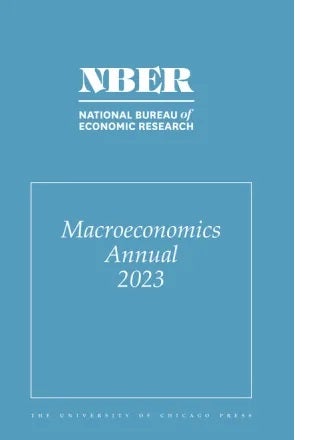NBER Macroeconomics Annual 2023, volume 38
 Martin Eichenbaum, Erik Hurst, and Valerie Ramey, editors.
Martin Eichenbaum, Erik Hurst, and Valerie Ramey, editors.
The NBER Macroeconomics Annual features research by leading scholars on important issues in contemporary macroeconomics.
David Berger, Kyle Herkenhoff, Andreas Kostol, and Simon Mongey consider the importance of market power in the labor market and develop a theory of monopsony that incorporates worker-firm-specific preference heterogeneity, search frictions, and firm granularity. They apply this theory to analyze the effects of monopsony on wages, job flows, and welfare.
Mary Amiti, Sebastian Heise, Fatih Karahan, and Ayşegül Şahin examine how supply chain disruptions and labor supply constraints contributed to the recent rise of inflation, recognizing their interactions with the shift of consumption from services to goods and expansionary monetary policy.
Daron Acemoglu, David Autor, and Christina Patterson explore the hypothesis that slow productivity growth stems from an unbalanced sectoral distribution of innovation—because innovation depends on complementary innovations among input suppliers, there can be rapid technological progress in a subset of inputs but slow productivity growth in the aggregate.
Greg Buchak, Gregor Matvos, Tomasz Piskorski, and Amit Seru investigate two important margins of adjustment in credit markets—banks’ ability to sell loans and shadow bank activity—and argue that accounting for them is critical for analyzing how lending responds to economic or policy shocks and the way such shocks are amplified through financial intermediaries.
Finally, Pedro Bordalo, Nicola Gennaioli, Rafael La Porta, Matthew O’Brien, and Andrei Shleifer demonstrate that that overreaction of long term profit expectations to reported profits could help reconcile Robert Shiller’s “excess volatility” puzzle with economic fluctuations more generally.


